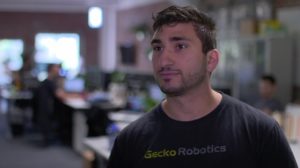A young boy decided one day that he’d rather not take the bus. Naturally Cory Nieves sought to find a way to buy his mother car to avoid his current inconvenience. He began to sell treats. He started with Swiss mix and found that his hustle was rather lucrative. After a while he searched for other treats to sell until he landed on cookies. After three months of baking with his mom, Nieves bit into what he thought was the perfect chocolate chip cookie. The recipe was a hit. “That’s when we knew we had a business — when people started taking our cookies seriously,” he said. He began to developed slogans as his venture grew in publicity. “Life’s too short to not eat a cookie!” Has he grew and began to make more money he grew in popularity and even made an appearance on the Ellen DeGeneres Show. It was not too long until he began to hire employees and sell his cookies all over the world.
Cory wanted to stop ridding a bus and worked till he could buy his mother, not one, but several cars. This is a beautiful example of hard work and dedication fueled by passion. He then provided a need for society and reaped the rewards. Cory Nieves is a true example to us all!

